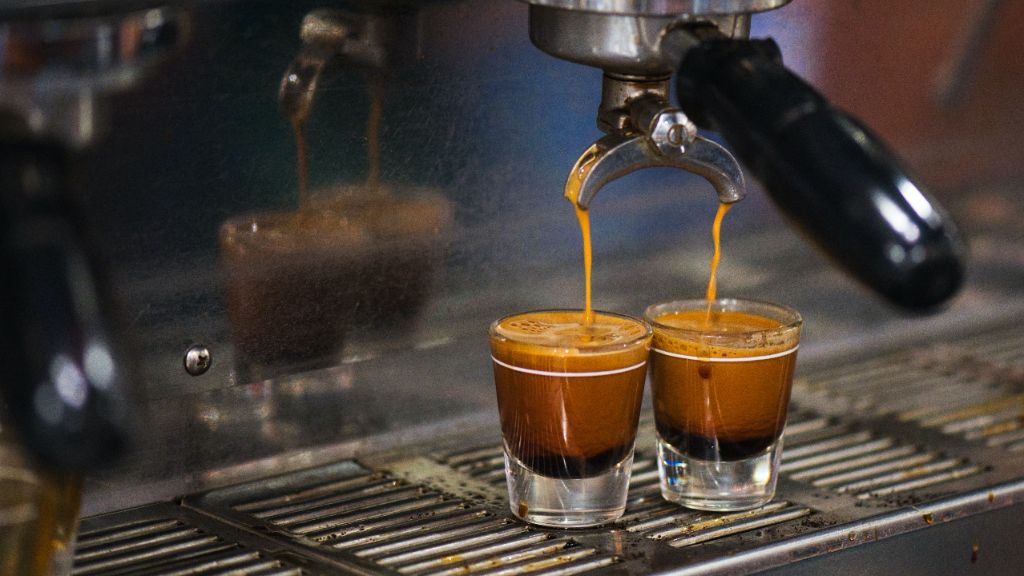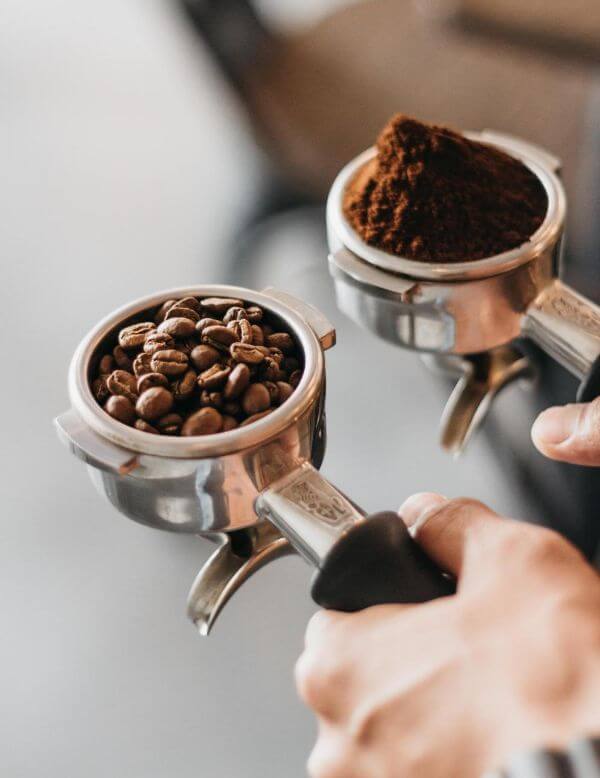The world of espresso is a captivating one, filled with rich aromas, bold flavors, and the promise of a perfect shot. But have you ever wondered if these precious shots have a limited lifespan? Do espresso shots die, and if so, how?
In this exploration, we dive into the fascinating journey of espresso from the moment it’s brewed to the critical question of its longevity. Join us as we uncover the secrets behind the life and eventual decline of espresso shots.
What Is A Dead Espresso Shot?
When we talk about a “dead” espresso shot, we’re referring to a shot that has lost its peak freshness and flavor. It’s essentially an espresso that has deteriorated in quality due to various factors. Let’s explore why and how espresso shots can “die.”
Why Do Espresso Shots Die?
Oxidation and Its Role
Espresso shots, like many other substances exposed to air, undergo a process known as oxidation. This chemical reaction occurs when coffee interacts with oxygen, leading to changes in flavor and aroma. But does this mean espresso shots oxidize over time?
Yes, they do. Oxidation in espresso can happen quickly, especially once the shot is pulled from the machine. As the hot liquid comes into contact with the air, it can lead to the breakdown of aromatic compounds, resulting in a loss of the vibrant and complex flavors we associate with fresh espresso.
Temperature Fluctuations
Another factor contributing to the “death” of espresso shots is temperature fluctuations. Espresso is sensitive to temperature changes, and variations can alter the taste and quality of the shot.
When espresso cools rapidly, it can become less flavorful and even sour or bitter. Conversely, if it remains too hot for an extended period, it may develop a burnt taste. These temperature-induced flavor changes are key reasons why some espresso enthusiasts believe that shots can “die” quickly if not consumed promptly.
Crema Dissipation
Crema, that creamy and frothy layer on top of an espresso shot, plays a crucial role in preserving its quality. It acts as a natural seal, protecting the espresso from immediate contact with oxygen and temperature changes.
As crema dissolves or dissipates, the shot loses its protective layer, and this can be a sign that its freshness is diminishing. A shot with vibrant and intact crema is often associated with a well-pulled and freshly brewed espresso. So, investigating how the dissipation of crema correlates with shot quality is essential in understanding the life cycle of espresso shots.
In the world of coffee, timing is everything. Espresso shots, once pulled, begin a countdown to their peak flavor. Understanding the factors that contribute to their “death” helps us appreciate the art of making and enjoying espresso while it’s at its best.
How long does it take for an espresso shot to die?
When it comes to espresso shots, timing is crucial. Espresso is known for its vibrant and robust flavor, which is at its peak freshness immediately after brewing. But how long does it take for that espresso shot to start losing its magic?
The general consensus among coffee aficionados is that an espresso shot begins to deteriorate within seconds of being pulled. Yes, you read that right – seconds, not minutes. The process is swift and unforgiving.
Espresso is a delicate balance of flavors and aromas, with the crema, a creamy top layer, playing a vital role. As soon as the shot is pulled, the crema starts to dissipate. This loss of crema is one of the earliest signs that the espresso shot is on its way to becoming “dead.”
The precise moment when an espresso shot “dies” can vary depending on factors like the freshness of the beans, the brewing process, and the specific blend used. However, most experts agree that you have a very short window of opportunity to savor that perfect shot – usually no more than 10 to 30 seconds.
So, if you’re aiming to enjoy the full depth of flavor and aroma that espresso has to offer, it’s essential to savor it promptly after it’s pulled. This immediacy is one of the reasons why espresso is often enjoyed as a quick shot or the base for various espresso-based beverages like lattes and cappuccinos.
What does a dead espresso shot taste like?
Now that we’ve explored the time frame within which espresso shots start to lose their vitality, let’s dive into what a “dead” espresso shot actually tastes like.
A dead espresso shot is a shadow of its former self in terms of flavor and aroma. Here are some common characteristics:
- Bitterness: As the crema dissipates and the shot cools, bitterness becomes more pronounced. The balance of flavors shifts, and the espresso can become overly bitter.
- Flat and Stale: The vibrant and complex flavors that make espresso so delightful begin to flatten out. The shot loses its liveliness and complexity, resulting in a flat, one-dimensional taste.
- Lack of Aroma: The rich and enticing aroma of a freshly pulled shot diminishes rapidly. A dead shot lacks the aromatic allure that makes espresso so inviting.
- Astringency: In some cases, you might detect astringency or a drying sensation in your mouth when sipping a dead shot. This is a result of the altered balance of compounds in the espresso.
In essence, a dead espresso shot is a far cry from the flavorful and aromatic experience that espresso aficionados cherish. It’s a stark reminder of the importance of enjoying your espresso promptly to savor its full potential.

Does a dead espresso shot have less caffeine?
Yes, a dead espresso shot does not necessarily have less caffeine than a fresh one. The caffeine content in an espresso shot remains relatively stable even as the shot deteriorates in flavor and aroma. However, the perceived strength of the caffeine might vary due to the changes in taste and balance of flavors in the shot.
While the caffeine content remains constant, it’s essential to note that a dead espresso shot’s altered flavor profile might make it seem weaker in terms of the overall coffee experience. The bitterness and lack of vibrancy in a dead shot can affect how you perceive the caffeine’s kick.
So, even though the caffeine content remains unchanged, the overall taste and experience of a dead espresso shot might not provide the same energetic jolt as a fresh, vibrant shot.
Can you use a dead espresso shot?
You might be wondering if there’s any salvageable use for a shot of espresso that’s past its prime. The answer depends on your tolerance for altered flavor profiles and your creativity in the kitchen.
While a dead espresso shot may not be suitable for sipping as a solo shot, it can still serve as a base for various coffee-based concoctions. For example:
- Milk-Based Drinks: Espresso shots, even when they’ve lost their freshness, can be used as a base for lattes, cappuccinos, or macchiatos. The addition of milk and perhaps a touch of sweetener can mask some of the undesirable flavors.
- Coffee Desserts: Incorporate a dead shot into recipes for coffee-flavored desserts like tiramisu, espresso brownies, or coffee-infused ice creams. The other ingredients and preparation methods can complement and transform the espresso’s taste.
- Cooking: Some savory recipes call for a touch of espresso for depth and complexity. A dead shot can be used in marinades, sauces, or glazes for meats or desserts.
While a dead espresso shot may not be the star of your coffee show, it can still play a supporting role in various culinary endeavors. Its flavor profile may not be ideal for sipping, but it can contribute to the depth and complexity of other dishes and beverages. So, don’t toss it out just yet – get creative and let it enhance your culinary experiments.
How to prevent espresso shots from deteriorating? 12 Tips
Start with Fresh Coffee Beans:
Use freshly roasted coffee beans with a roast date, and aim to use them within two to three weeks of roasting. Fresh beans yield more vibrant and aromatic espresso shots.
Proper Storage:
Store your coffee beans in an airtight container away from light, heat, and moisture. Oxygen and light can accelerate the deterioration of coffee beans, so an airtight container is crucial.
Invest in a Burr Grinder:
Invest in a burr grinder for consistently sized coffee grounds. The right grind size is vital for proper extraction and flavor. Burr grinders provide more precise control over grind size compared to blade grinders.
Use the Right Grind Size:
Adjust the grind size to match your espresso machine. Finer grounds are typically used for espresso, but the ideal size can vary depending on your machine. Consult your espresso machine’s manual for guidance.
Clean Your Espresso Machine:
Regularly clean and maintain your espresso machine. Residue from old coffee oils can negatively impact the taste of your shots. Follow the manufacturer’s recommendations for cleaning intervals.
Maintain Consistent Brewing Parameters:
Keep the brewing parameters consistent. This includes factors like water temperature, brew time, and pressure. Inconsistent brewing can result in uneven extraction and flavor variations.
Grind Just Before Brewing:
Grind your coffee beans just before brewing. Pre-ground coffee can lose freshness rapidly, as it’s exposed to oxygen once the bag is opened.

Brew Immediately:
Brew your espresso shot as soon as possible after grinding the beans. The longer you wait, the more the coffee will deteriorate.
Enjoy Promptly:
Sip and enjoy your espresso shot promptly after it’s extracted. The crema, which is a crucial part of the flavor experience, begins to dissipate quickly.
Minimize Temperature Fluctuations:
Try to avoid dramatic temperature changes. Extreme temperature variations can impact the shot’s quality. Keep your espresso machine and coffee beans in a stable environment.
Cleanliness is Key:
Regularly clean and maintain your espresso machine, grinder, and all related equipment. Clean equipment contributes to a better-tasting shot.
Experiment and Adjust:
Don’t be afraid to experiment with different coffee beans, grind sizes, and brewing parameters. Tailor your espresso-making process to your taste preferences.
By following these practical tips and maintaining a consistent and thoughtful approach to brewing, you can significantly enhance the quality of your espresso shots and prevent them from deteriorating. Enjoy your coffee at its freshest and most flavorful!
Final Words
We’ve delved into the world of espresso shots and answered the burning question: do espresso shots die? We’ve explored the factors that contribute to their decline, including oxidation, temperature fluctuations, and crema dissipation. We’ve also discussed the timeline of shot deterioration and what a dead espresso shot tastes like.
But it’s not all gloom and doom for espresso enthusiasts. We’ve provided insights into how to prevent espresso shots from deteriorating, offering practical tips to keep your shots fresh and flavorful. By understanding the intricacies of espresso shot freshness and implementing these preventive measures, you can savor the essence of espresso at its finest.











































